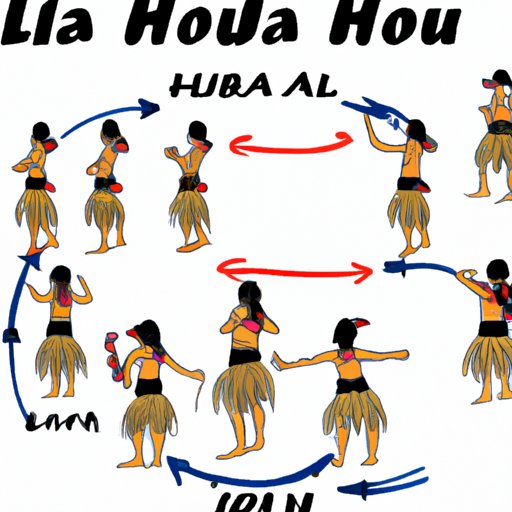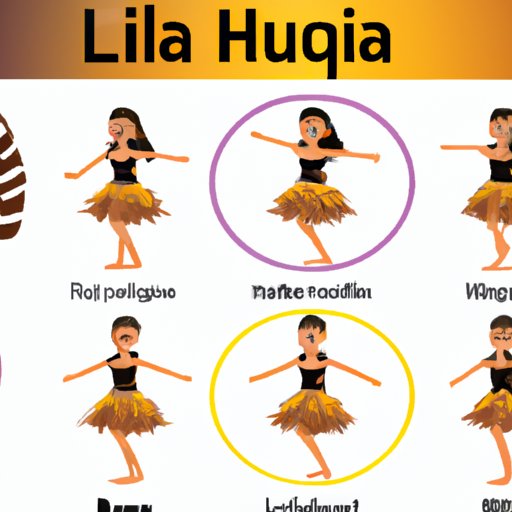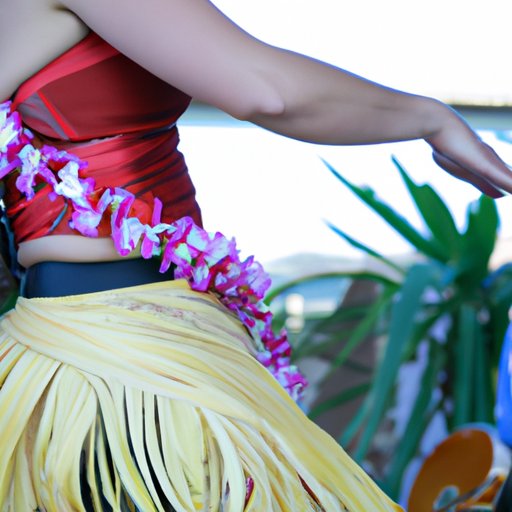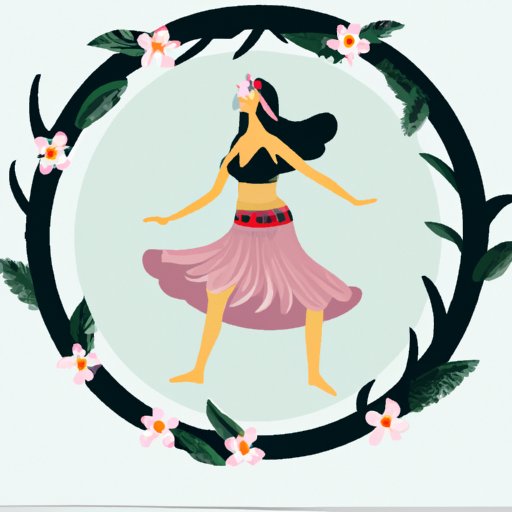Introduction
The hula is a traditional Hawaiian dance that has been passed down through generations. It is both a form of entertainment and a way of expressing stories, feelings, and emotions through movements and gestures. The hula is often associated with Hawaiian culture and is considered an important part of the island’s identity.
The word “hula” comes from the Hawaiian language and can be roughly translated to mean “dance” or “story.” Hula is performed with either ancient chants or modern music and often includes the use of props such as coconut shells, bamboo poles, and gourds. The hula is typically accompanied by an instrument called the ipu, which is made from a dried out gourd. There are many different types of hula, including traditional and modern styles.

How to Learn the Hula Dance
Learning the hula dance is not difficult but it does require dedication and practice. The first step is to find a qualified teacher or class. A good teacher will be able to teach the fundamentals of the hula and provide guidance on how to properly perform the moves. It is also important to learn the correct posture and breathing techniques. Once the basics have been mastered, it is important to practice regularly in order to keep the skills sharp.

Types of Hula Dances and Their Meanings
There are two main types of hula: traditional and modern. Traditional hula is often referred to as kahiko and is a more formal style of dance. It is usually accompanied by chanting or ancient instruments and tells a story about Hawaiian history and culture. Modern hula, or auana, is less formal and often uses modern music. It is often used to express feelings or emotions through movement.

Cultural Significance of Hula Dancing
The hula has a long history in Hawaiian culture and is still practiced today. It is believed to have originated as a form of worship to the gods and was used to tell stories and preserve history. Hula was also used to celebrate special occasions and mark important events. Today, the hula is considered an important part of Hawaiian culture and is seen as a way to connect with the past.
Hula is seen as a spiritual practice and is said to bring people closer to their ancestors. The movements and gestures of the hula are thought to evoke powerful emotions and strengthen the connection between the dancer and the divine. Hula is also seen as a way to honor the land and its people, and to remember the culture and traditions of Hawaii.
Interview with a Hula Dancer
We spoke with Kaleo, a hula dancer from Honolulu, Hawaii. Here is what he had to say about his experience with hula:
I started learning hula when I was 11 years old. I was drawn to the beauty and grace of the dance, and I wanted to learn more about Hawaiian culture. My teacher taught me the basics of hula, and I gradually learned more complex moves. I am now a professional hula dancer and I love sharing my passion with others.
My advice for anyone looking to learn hula is to find a qualified teacher and to be patient and consistent with your practice. It takes time to learn the steps and to understand the culture behind the dance. But once you do, you will be rewarded with a beautiful and meaningful form of expression.
Comparison of Traditional and Modern Hula Dancing
Traditional and modern hula have some similarities, but there are also some key differences. Both forms of hula involve intricate hand and body movements and gestures, but traditional hula is usually more stylized and follows strict guidelines. Traditional hula also tends to be slower and more deliberate than modern hula. Modern hula is often faster-paced and incorporates more improvisation. Additionally, traditional hula is usually accompanied by chanting or ancient instruments, while modern hula is typically accompanied by modern music.
Health Benefits of Hula Dancing
In addition to being a fun and creative form of exercise, hula dancing offers several health benefits. It can help improve cardiovascular health, increase flexibility, and improve balance. Hula dancers also tend to have better posture due to the focus on proper body alignment. In addition, hula dancing is a great way to relieve stress and let go of any negative thoughts or emotions.
Conclusion
The hula is a beautiful and meaningful form of expression that has been passed down through generations. It is a way to connect with Hawaiian culture, honor the land and its people, and remember the culture and traditions of Hawaii. Learning the hula is not difficult but it does require dedication and practice. It also offers several health benefits, including improved cardiovascular health, increased flexibility, and improved balance. Hula dancing is an enjoyable and rewarding experience that can be enjoyed by all.
(Note: Is this article not meeting your expectations? Do you have knowledge or insights to share? Unlock new opportunities and expand your reach by joining our authors team. Click Registration to join us and share your expertise with our readers.)
